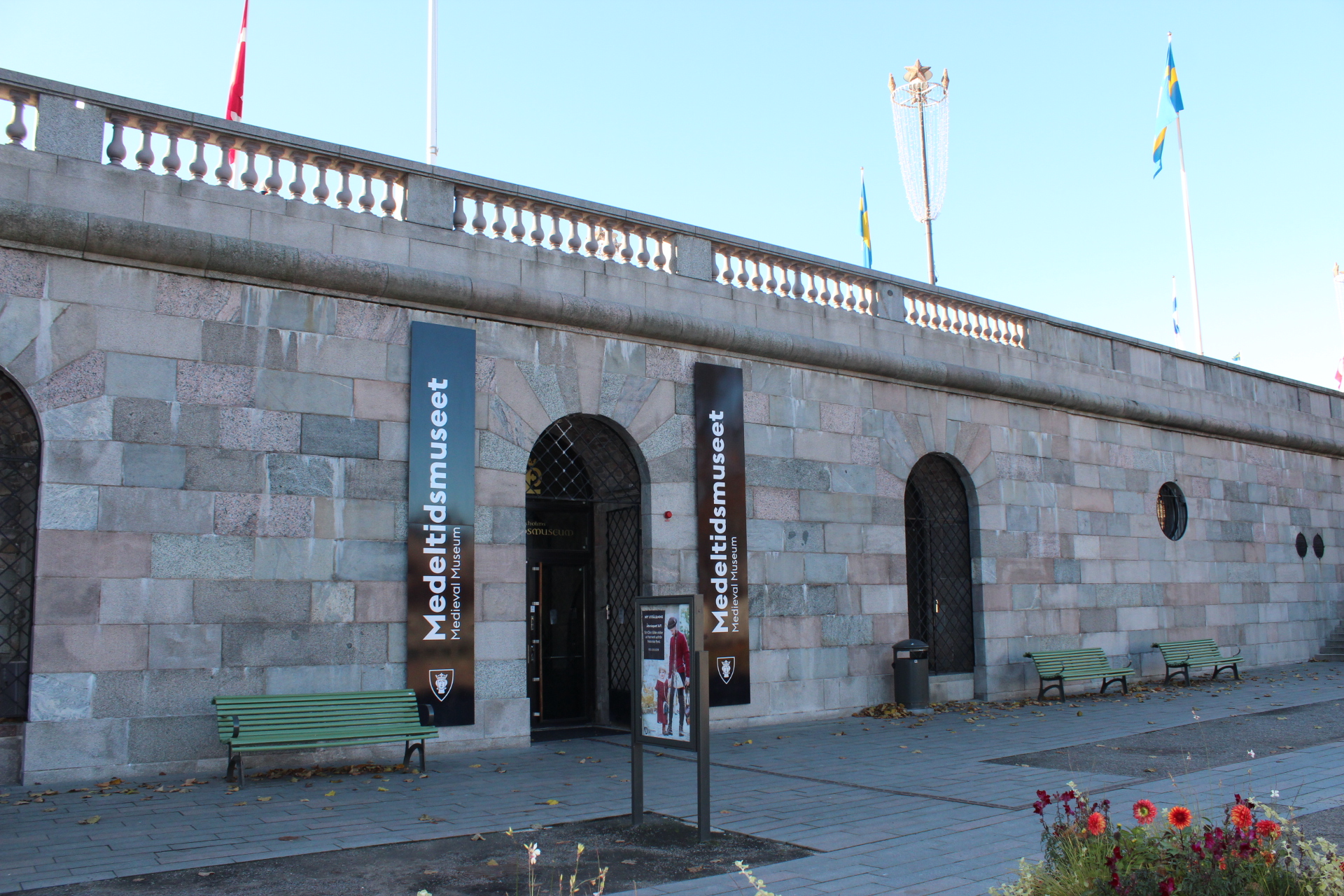NordenBladet – The Medieval Museum is situated on the Helgeandsholmen island between the Royal Palace and the Opera. Entrance under Stockholm’s oldest stone bridge Norrbro. The exhibits tell of Stockholm’s emergence and the town’s development in the Middle Ages. The exhibition describes with compassion how people lived and made a livelihood.
The Medieval Museum (Stockholms Medeltidsmuseum) focuses on people and retells stories from the everyday life of medieval Stockholmers. Encounter the tales of Jöns Skomakare, Sketna Gertrud Syltekona, and many others. The museum includes Stockholm’s city wall from about 1520 preserved as a fixed ancient remnant 55 meters (180 feet) long. You will find the entrance to Norrbro, Stockholm’s oldest stone bridge. Free admission.
Getting to museum:

Photo: Google maps

Photo: Helgeandsholmen (Jan Ainali, CC BY-SA 3.0)

Photo: Helgeandsholmen with the Riksdagen, aerial view (Arild Vågen, CC BY-SA 4.0)
Visiting address:
Strömparterren 3, Norrbro, Stockholm
Phone: +46(0)8-508 317 90
Webpage: medeltidsmuseet.stockholm.se
Opening hours:
Monday: CLOSED
Tuesday: 12.00-17.00
Wednesday: 12.00-20.00
Thursday-Sunday: 12.00-17.00
Stairs and elevator leads down to Strömparterren, and the Museum’s entrance. The easiest way to get here is by foot or by public transport.
Public Transport:
Metro to Kungsträdgården or Gamla stan.
Bus 2, 43 and 76 to the Kungsträdgården. Bus 62 and 65 to Gustav Adolfs torg.
Parking:
There is no car parking near the museum.
Cloakroom and toilets:
Cloakroom and toilets are located to the right behind the reception desk.
Photography:
Photography is permitted without flash and tripod. Exceptions can be made for non-commercial use.
Stroller:
Strollers are welcome in the museum. No stroller parking available.
Eat and drink:
There is no cafe or restaurant in the museum. The café Kerstin och Britt at Strömparterren, outside the museum, is open during the summer season.
Smoking:
Smoking (including e-cigarettes) is not allowed in the museum or at the entrence.
Mobile Phones:
Please use your cell phone with consideration to other visitors.
Free WiFi:
Free WiFi is available in the musuem.

Foto: NordenBladet/Helena-Reet Ennet
____________________________________
About the museum:
The Medieval Museum is built around the findings from a major archaeological investigation during the 1970s. The museum is a part of the City of Stockholm.
History
The museum came into existence after a major archaeological investigation which took place in advance of the rebuilding of the Riksdag (Swedish Parliament) and the building of garages under the present-day gardens of Riksplan. Among all the remains which came to light were parts of the Town Wall which Gustavus Vasa had built in the 1530s as well as the churchyard of the medieval Helgeandshuset (House of the Holy Spirit), which originally gave its name to the island.
The County Administrative Board decided that these remains should be preserved as permanent heritage monuments. This was how the Medieval Museum came about. The State bore the building costs while the City of Stockholm dealt with the fittings and fixtures, displays and running costs.
The “National Pit”
The archaeological investigations on Helgeandsholmen from 1978—1980 are the most comprehensive so far undertaken in the inner city area of Stockholm. The investigations were carried out in connection with the rebuilding of the Riksdag in preparation for moving back to the island. Altogether an area of 8,000 square metres was investigated and when the project was completed a volume of some 50,000 metres of earth had been dug through and carried away. The excavations made it possible to follow the development of settlement in the area from the mid thirteenth century to the present day.
Most eye catching were the foundations of buildnings, above all from seventeenth century palaces, which had already come to light in the early stages of the work. Among the most remarkable finds, however, were the medieval churchyard of Helgeandhuset with some 7 metric tons of skeletons, and Gustavus Vasa’s town wall from around 1530. No less than 11 boats were also found. The excavations aroused great attention and debate in the press and were soon christened “Riksgropen” (the National Pit).
Photo from the air showing the dug out area in front of the Riksdag building.
The debate was mainly a matter of what one was to do with the cavity and the remains of the buildings after investigations had been completed. Originally the idea had been to have a garage for the Riksdag with a reception area for goods and workshops. Now it ended up with the most remarkable remains — the Vasa Wall and the churchyard wall — being preserved, and an underground museum being built around them.
The Medieval Museum opened for the first time in 1986. It was renovated and reopened in 2010.
Look also videos about The Medieval Museum: Just walking around Stockholm gives you a very clear glimpse into its medieval past, but in order to understand how the city thrived, prospered and defended itself, you will do no better than have a quick visit at this lovely free museum. We are sure you’ll walk right next to it while you’re walking around town on your first day really so, why not just walk in?!
Featured image: NordenBladet / Helena-Reet Ennet
